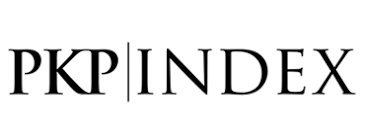PERBEDAAN INSIDENSI DIABETES MELITUS TIPE 2 DAN HBA1C PADA POPULASI TERPAPAR-TIDAK TERPAPAR EMISI PABRIK SEMEN PADANG
Abstract
Keywords
Full Text:
PDFReferences
Merentek E, Nara M, JMF A. Faktor Resiko pada Mereka dengan Resistensi Insulin. Naskah Lengkap 4 th Natl Obes Symp 2 th Natl Symp Metab Syndr. 2005;243–42.
Perkeni. Konsensus Pengelolaan dan Pencegahan Diabetes Melitus Tipe 2 di Indonesia. PB Perkeni. Jakarta; 2011.
Scheen A. Pathophysiology of Type 2 Diabetes. Acta Clin Belgia. 2003;35–41.
F T. Pathophysiology of Diabetes Mellitus Type 2: Role of Obesity, Insulin Resistance and B-cell Dysfunction. Diabetes Cancer, Epidemiol Evid Mol Links from Diabetes. 2008;19:1–18.
Qinghua Sun, Yue P, Deiuliis JA, Lumeng CN, Kampfrath T, Mikolaj MB, et al. Ambient air pollution exaggerates adipose inflammation and insulin resistance in a mouse model of diet-induced obesity. Circulation. 2009;119(4):538–46.
Rajagopalan S, Brook RD. Air Pollution and Type 2 Diabetes: Mechanistic Insights. Diabetes. 2012;61:3037–45.
Liu C, Xu X, Bai Y, Wang T-Y, Rao X, Wang A, et al. Air Pollution-Mediated Susceptibility to Inflammation and Insulin Resistance: Influence of CCR2 Pathways in Mice. Environ Health Perspect. 2014;17–26.
Edwards P. Global Cement Emissions Standars. Global Cement Magazines. 2014;25–33.
World Health Organization. Ambient (Outdoor) Air Quality and Health [Internet]. 2014 [cited 2016 Jan 16]. Available from: www.who.int/mediacentre/factsheets/fs313/en
Liu C, Ying Z, Harkema J, Sun Q, Rajagopalan S. Epidemiological and Experimental Links between Air Pollution and Type 2 Diabetes. Toxicol Pathol. 2013;41(2):361–73.
Wang B, Xu D, Jing Z, Liu D, Yan S, Wang Y. Effect of Long Term Exposure to Air Pollution on Type 2 Diabetes Mellitus Risk: A Systemic Review and Meta-analysis of Cohort Studies. Eur J Endocrinol. 2014;171:173–82.
Brook RD, Jerrett M, Brook JR, Bard RL, Finkelstein MM. The Relationship Between Diabetes Mellitus and Traffic-Related Air Pollution. J Occup Env Med. 2008;50:32–8.
Tamayo T, Rathmann W, Krämer U, Sugiri D, Grabert M, Holl RW. Is Particle Pollution in Outdoor Air Associated with Metabolic Control in Type 2 Diabetes. PLoS One. 2014;9(3):1–6.
Chuang K-J, Yan Y-H, Chiu S-Y, Cheng T-J. Long-Term Air Pollution Exposure and Risk Factors for Cardiovascular Diseases Among the Elderly in Taiwan. Occup Env Med. 2011;68:64–8.
DOI: https://doi.org/10.33854/heme.v3i2.632
Refbacks
- There are currently no refbacks.
 Health and Medical Journal This work is licensed under a Creative Commons Attribution-NonCommercial-ShareAlike 4.0 International License.
Health and Medical Journal This work is licensed under a Creative Commons Attribution-NonCommercial-ShareAlike 4.0 International License.











